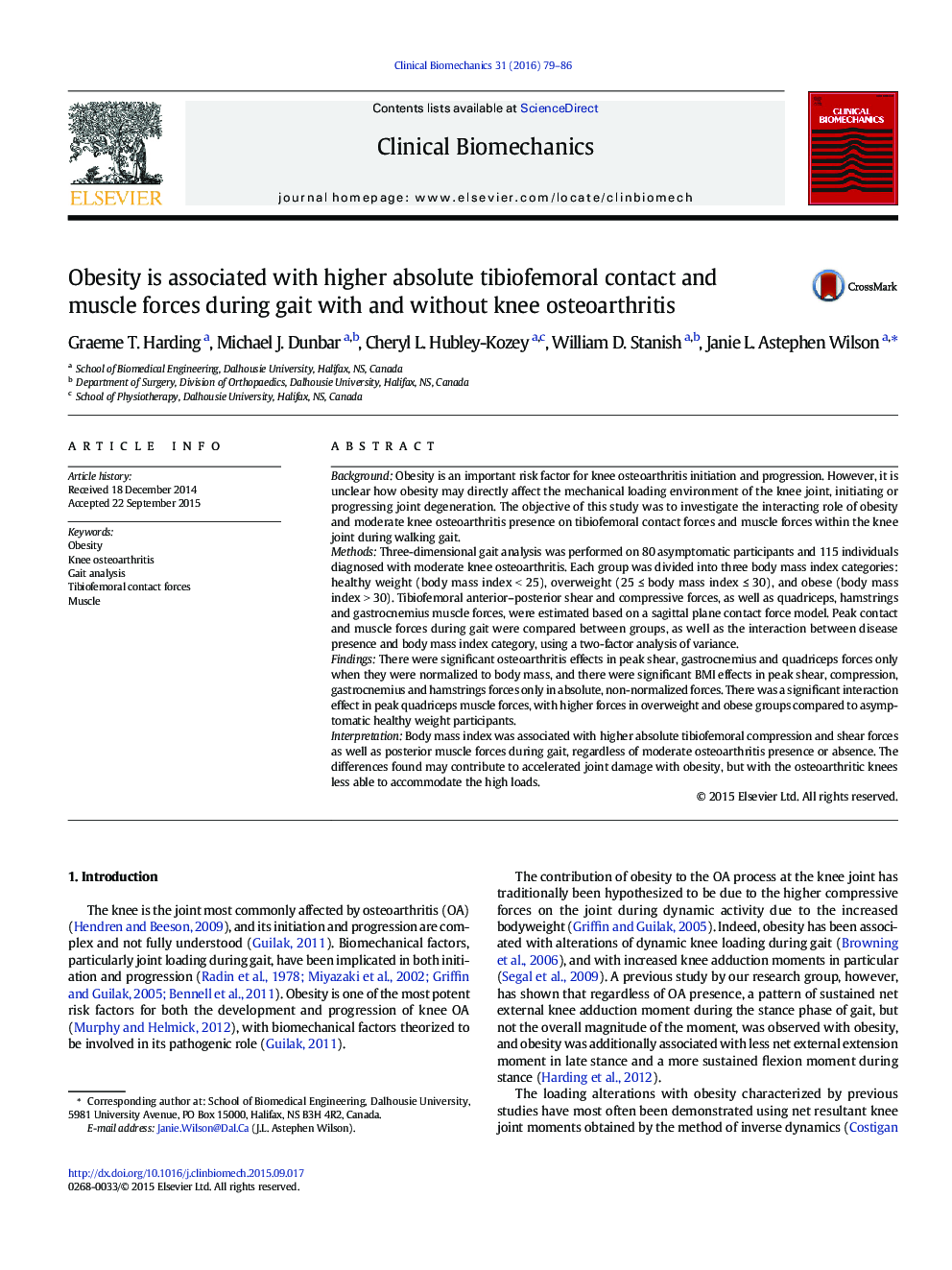| کد مقاله | کد نشریه | سال انتشار | مقاله انگلیسی | نسخه تمام متن |
|---|---|---|---|---|
| 4050172 | 1603747 | 2016 | 8 صفحه PDF | دانلود رایگان |
• Higher body mass index was associated with higher compressive and shear knee forces during gait.
• Force increases with higher body mass index were similar in magnitude to body weight differences.
• Higher body mass index category was associated with higher quadriceps and hamstring forces in early stance.
• Higher late stance gastrocnemii forces with higher body mass index may reflect the need for higher propulsive forces.
• Knee forces normalized to body mass were lower with moderate knee osteoarthritis than controls.
BackgroundObesity is an important risk factor for knee osteoarthritis initiation and progression. However, it is unclear how obesity may directly affect the mechanical loading environment of the knee joint, initiating or progressing joint degeneration. The objective of this study was to investigate the interacting role of obesity and moderate knee osteoarthritis presence on tibiofemoral contact forces and muscle forces within the knee joint during walking gait.MethodsThree-dimensional gait analysis was performed on 80 asymptomatic participants and 115 individuals diagnosed with moderate knee osteoarthritis. Each group was divided into three body mass index categories: healthy weight (body mass index < 25), overweight (25 ≤ body mass index ≤ 30), and obese (body mass index > 30). Tibiofemoral anterior–posterior shear and compressive forces, as well as quadriceps, hamstrings and gastrocnemius muscle forces, were estimated based on a sagittal plane contact force model. Peak contact and muscle forces during gait were compared between groups, as well as the interaction between disease presence and body mass index category, using a two-factor analysis of variance.FindingsThere were significant osteoarthritis effects in peak shear, gastrocnemius and quadriceps forces only when they were normalized to body mass, and there were significant BMI effects in peak shear, compression, gastrocnemius and hamstrings forces only in absolute, non-normalized forces. There was a significant interaction effect in peak quadriceps muscle forces, with higher forces in overweight and obese groups compared to asymptomatic healthy weight participants.InterpretationBody mass index was associated with higher absolute tibiofemoral compression and shear forces as well as posterior muscle forces during gait, regardless of moderate osteoarthritis presence or absence. The differences found may contribute to accelerated joint damage with obesity, but with the osteoarthritic knees less able to accommodate the high loads.
Journal: Clinical Biomechanics - Volume 31, January 2016, Pages 79–86
